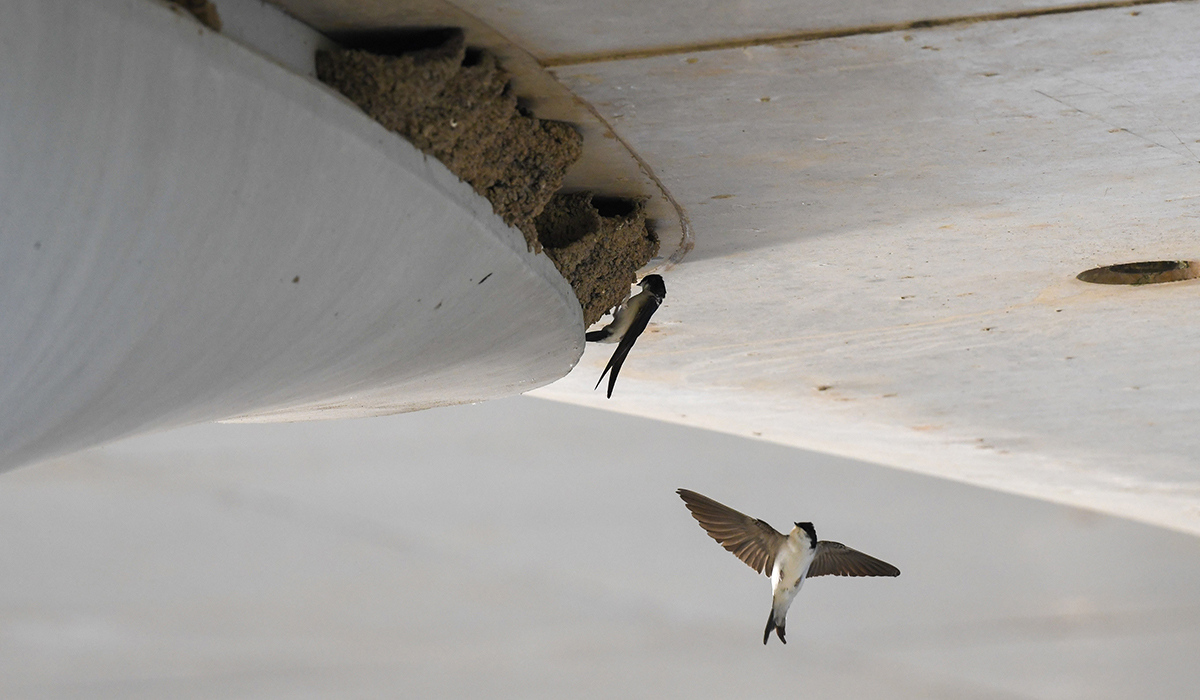
01/08/2023
Bridges and house martins, ‘De Lentloper’ bridge, Nijmegen (NL)
-
Bridge engineers are traditionally not big fans of birds in and around their bridges. Many a detail on the underside of the bridge is designed ‘bird proof’. Why? Their nests and droppings can cause damage, corrosion and wear and tear to the bridge. Of importance here is correct detailing, even in nature-inclusive design. And this has long been a focus of bridge designs by Ney & Partners. That is why we are delighted with the swallow colonies at the bottom of the ‘De Lentloper’ bridge in Nijmegen (NL) It was recently determined by the local bird association that more than 200 nests were built by house martins at the bottom of the concrete bridge deck over a length of 220 m. This means that this is the largest house martin colony in the region.
That house martins like to build their nests under an overhang is well known. They also prefer the east or north side as a building location and prefer a white or light ambient colour. This keeps parasites away and makes it cooler. Swallows are experienced masons. The male applies small balls of mud which the female uses to brick layer by layer. The inside of the nest is finished with grass, lint and feathers. House martins live on average five years and after winter migration to Africa, they return to their former breeding grounds. The nest is used by a pair for two broods and is usually well maintained and repaired. As building material, house martins use mud which they collect in their beaks and then mix with their saliva. The nest is built in the shape of a hemisphere. The nest opening is at the top and is made so small that house sparrows cannot enter the nest. House martins usually breed in colonies in which nests are built so close together that they often touch.
The house martins at the Lentloper Bridge chose to build the nest on the small negative joint between column head and bottom. The negative joint has a very pragmatic origin. The column head is a geometrically complex shape, optimized to absorb the large bending forces between pillar and bridge. The intention was to use this unique steel formwork for all eight piers, but the connection angle between pillar and concrete underside is always different. The negative joint is meant to accommodate this. Image © PaulGnodde
-
- → project